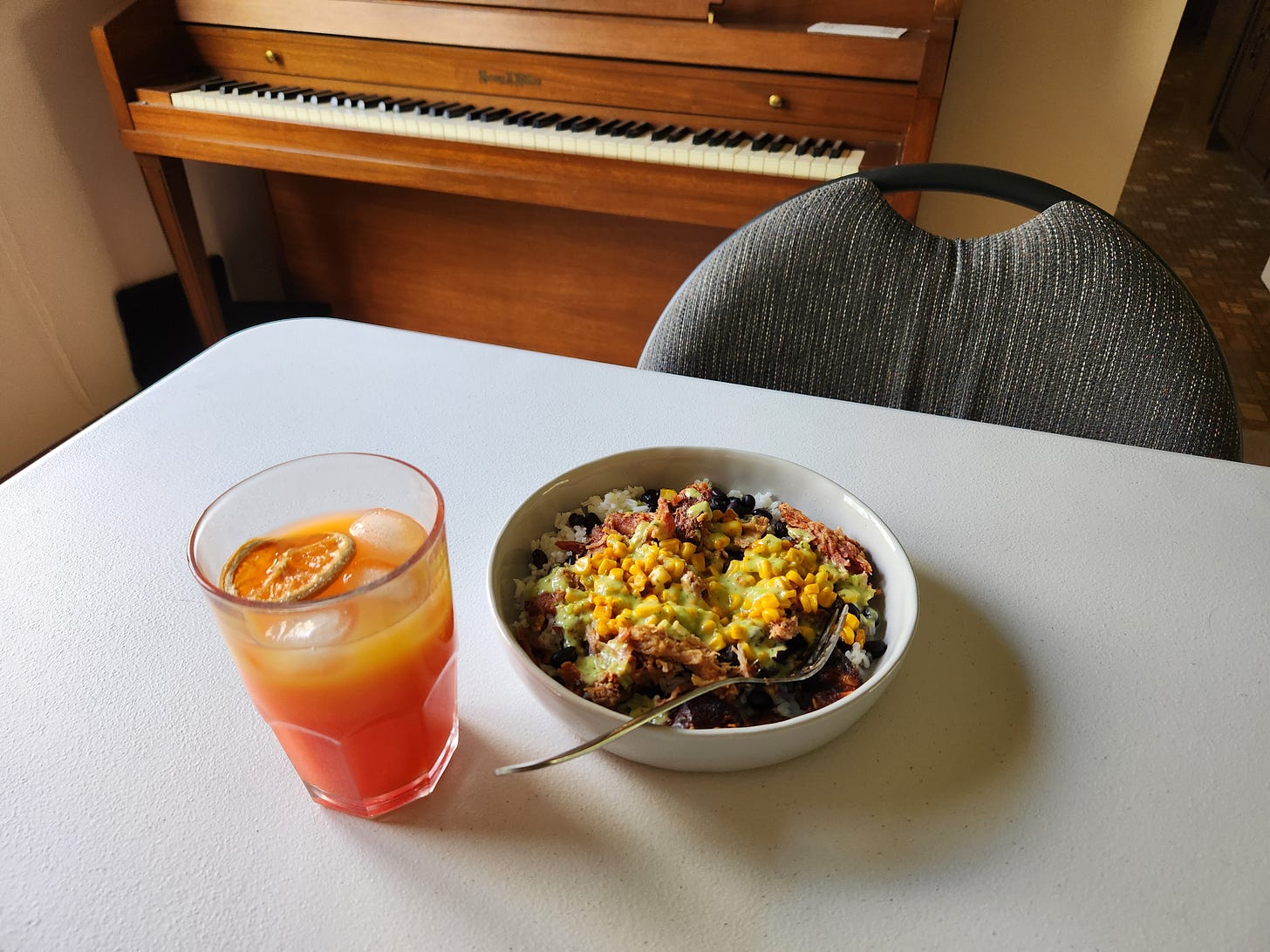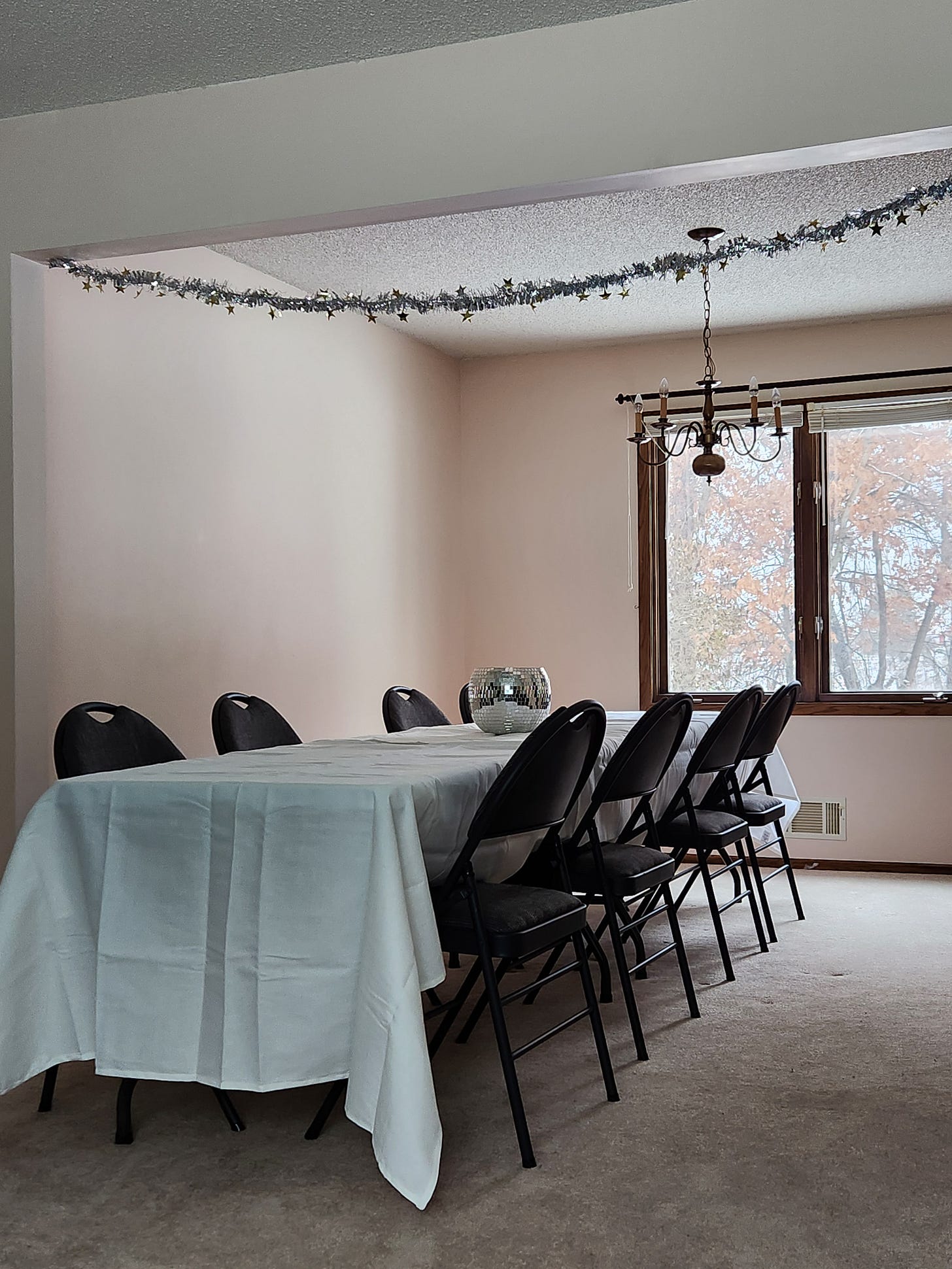Gathering Around the Folding Table
How a simple folding table became a picture of hospitality.
When you move into a new space, guests are accustomed to temporary furniture. A simple folding table with padded folding chairs will do.
I wish someone had told me that after unpacking boxes and hosting a housewarming party, the same folding table would become somewhat of an albatross.
What was once a band-aid solution has become a mainstay in our home.
Now, almost two years later, the folding table is still nestled under a cheap chandelier held up by bungee cords—a MacGyver hack from the previous homeowner. In full view of the dining room window, the table is placed by a large out-of-tune piano—a surprise “gift” left behind for the new tenants.
And to its credit, the folding table does its job, but that doesn’t stop it from slowly grating on me.
When guests initially toured our home, I immediately launched into our vision for each room.
Surely they’d understand we didn’t intend on keeping the neon green carpet, lily pad wallpaper, and quirky cabinetry, right?
I divulged my plans to anyone who would listen while my husband chuckled in the background.
I didn’t realize it then, but this compulsive need to explain myself was born out of a creeping sense of embarrassment.
It felt vulnerable to show people the “before” state of our home.
Would we be judged? Would we be mocked? Could we convince others to picture what we saw when we first walked through the door?
In my attempt to control the narrative, I grew increasingly discouraged with how slowly we were moving through our renovations. And our dining room—with its folding table and chairs—was at the very bottom of the list.
As an early HGTV addict, weekends were for envisioning my future home alongside my dad.
We talked about building a tiny house with a lofted office. We dreamed of buying an old warehouse and converting it into apartment units. We even talked about designing a lake house just outside of the Twin Cities—a dream that was once his before it became my own.
The trends came and went—like all-white kitchens, sliding barn doors, and neutral subway tile— but each year brought a greater oversaturation of interior design content with it.
From YouTube videos to Instagram Reels, it seemed like no matter where I turned, I was surrounded by messages telling me how my home was supposed to look before I even had one.
All of these television shows and influencers convinced me that, in the snap of a finger, you could take your home from drab to fab.
And I bought into the lie, hook, line, and sinker.
Growing up, my mom never believed she had the right space in her home for hosting.
Her living room was too quaint. She didn’t have a half-bath on the main floor. Her patio was spacious but could only be used a few months out of the year in Minnesota. Her house didn’t have an open-concept layout, and there never seemed to be enough places for people to sit.
I used to roll my eyes when she listed her many grievances, but now I realize I’m no better.
In America, our standards for hosting and entertaining are impossibly high.
Some may blame the internet, social media, past generations, or all of the above, but the impractical ideals remain.
We’d rather wait until we can host Pinterest-worthy gatherings than meet people where they are in the small spaces we already have. We put hosting into the “someday soon” category and pray for the day we can invest in a bigger home with better furniture.
But what we really need is more of a focus on hospitality than entertaining.
In one of my recent favorite Reels, author and theologian Phylicia Masonheimer says, “Entertaining is about me and how I can impress you [with] a perfectly set table and a gourmet meal. But hospitality is about the other.”
True hospitality looks like extending a warm welcome to guests by offering your home as a humble gathering place. It also means welcoming strangers without the desire to dazzle and impress them.
Phylicia reminds us, “If entertaining says, ‘Look at me,’ hospitality says, ‘Look at you.’”
She goes on to talk about how we often see dirt (or, in our case, dog hair) on the floor, a tiny living room, or ugly furniture, but guests only remember a feeling of safety and belonging.
So, what would happen if we let go of cosplaying as the picture-perfect host and embraced simple hospitality instead?
I’ve come to accept our folding table.
I haven’t scoured Facebook Marketplace for other dining table options for months. I’ve put away the tape measure. I don’t even pin inspiration photos.
Meanwhile, we welcome more people into our home than ever before.
We invite neighbors over for soup and board games. Evan hosts biweekly Magic: The Gathering game nights. I host all-day readathons and a reading year-in-review party. We become the go-to New Year’s Eve spot and host rivalry football games (Skol Vikings!).
I no longer sulk or make excuses for our folding table. Most of the time, I don’t even cover it with a white linen tablecloth as I leave it unmasked in the dining room.
And who knows? With all of the meals and laughter we’ve shared around the folding table, someday I might even miss it.
A moment to reflect
What does true hospitality look like to you? How can you meet people right where they are this week?





I'm late to reading this, but I really appreciated it now that I've just moved into my own house (that definitely needs a lot of work!). It's so easy to put things off until everything is "perfect" but I've realized very quickly that a house is never going to be exactly what you want it to be!